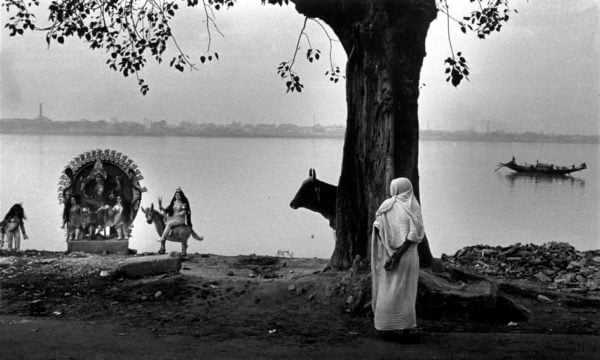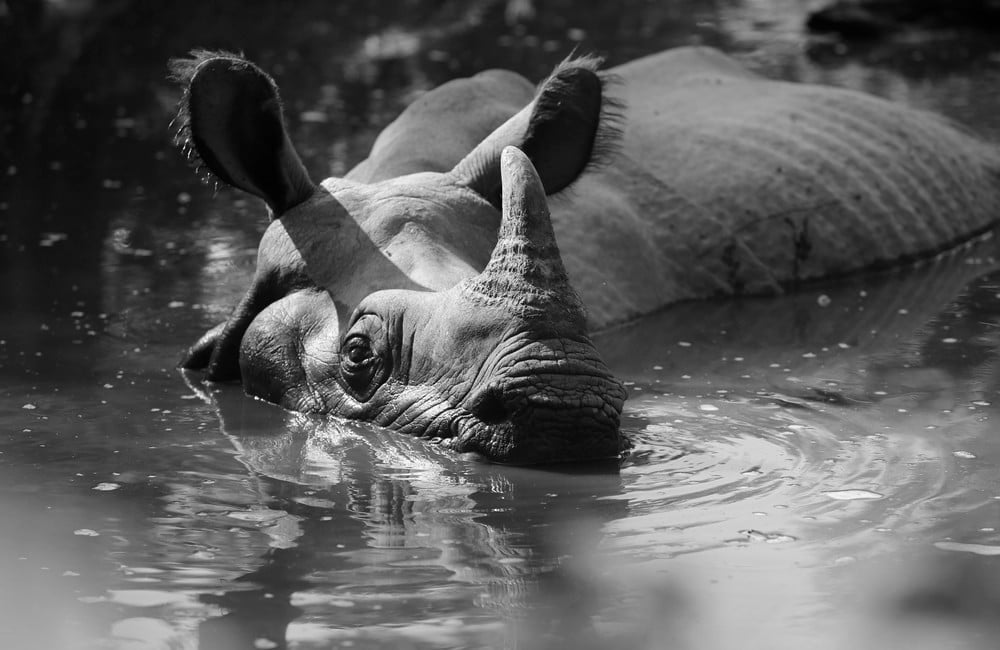Discover Myths and Legends of Lumbini Buddhas birthplace, the birth story of Gotama Buddha and Lumbini in historical travel accounts. Lumbini is a Pilgrims nirvana.
Entering the gates of Lumbini temple, is replacing, the omnipresent dust * with the smell of flowers and prayer sticks – the perpetual honks on the busy roads with the silence of a green, flowering garden and gently waving prayer flags. Lush gardens, ponds, light forests, wetlands and rivers as well, as a Crane Sanctuary add to the beauty and serenity of this place.
*due to road development, construction work and the dry season in Nepal.
In this Article
The site of Lumbini was inscribed on the UNESCO World Heritage List as number 666 in 1997:
As the birthplace of the Lord Buddha, testified by the inscription on the Asoka pillar, the sacred area in Lumbini is one of the most holy and significant places for one of the world’s great religions.
The archaeological remains of the Buddhist viharas (monasteries) and stupas (memorial shrines) from the 3rd century BC to the 15th century AD, provide important evidence about the nature of Buddhist pilgrimage centres from a very early period.
The site is now being developed as a Buddhist pilgrimage center, where the archaeological remains associated with the birth of the Lord Buddha form the center. There are more than 25 international monasteries and temples built by the Buddhist communities from all around the world here.
PRINCE SIDDHARTA GOTAMAS BIRTH IN HISTORY, MYTH AND LEGEND
He was born in the grove of Lumbini, when his mother was on her way to Devadaha to visit her parents under a sal tree on the full moon day of the Visakha month (around May).
He was given the name Siddhattha.
~ The Illustrated Jataka & Other Stories of the Buddha by C. B. Varma
Birth Story of Gotama Buddha
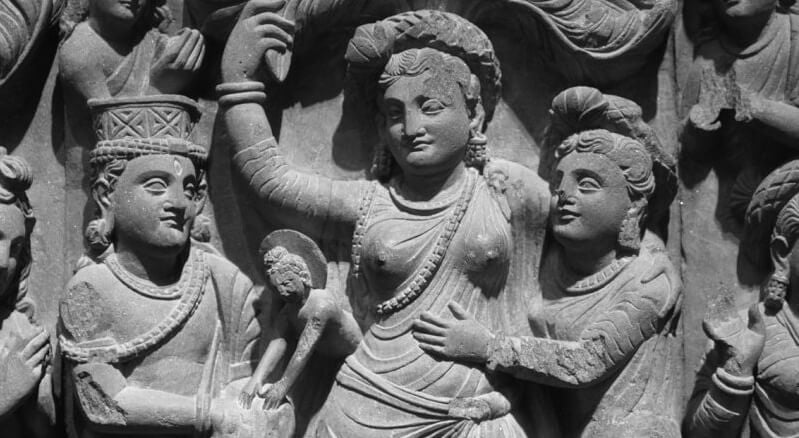
Gotama Buddha is considered as the twenty-fourth Buddha. The Buddha is a generic and appellative name, which means
“one who has attained Enlightenment”.
The Pali tradition furnishes a list of twenty-four Buddhas born before Sakyamuni Gotama Buddha.
In accordance with the tradition of the Buddhas, the Bodhisatta Sumedha made a solemn pledge (abhinihara-karana or mulanidhana) before Dipankara Buddha for the welfare and liberation of all creatures. (A Bodhisatta is an aspirant of the bodhi or Englightenment).
Before his conception he was born in the Tusita heaven and waited for the opportune time for the final course of his birth. According to the Lalitavistara he had appointed the Bodhisattva Vishvapani as the king of the Tusita Loka before his conception. It may be noted that Vishvapani shall be the next Buddha and is called the Future Buddha or Maitreya (Pali: Metteya) Buddha.
Siddhattha was conceived in the womb of Mahamaya, the consort of the king Suddhodana of Kapilavatthu on the full-moon day of Asalha. Her pregnancy was supernatural as the baby had entered her womb without any physical relationship. This event is particularly ascribed to the Maha Maya’s dream of a white elephant, which entered her womb from her right side.
Further, her conception is marked by the appearance of thirty-two special events like an earth-quake; light flooding the ten thousand world-systems (Chakkavalas); and extinction of the fire in hells.
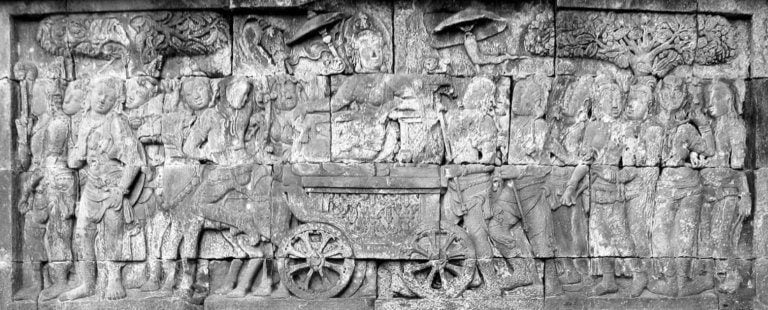
Ten months later, on the full-moon day of Vishaka (May), Maya Devi undertook a journey to Devadaha to visit her parents. On her way she saw the beautiful grove of Lumbini; and desired to break the journey for a while. Walking around, she came under a great sal tree. No sooner than she reached there she had a sudden labour pain. Thus, seizing one of the branches of the sal she delivered the baby Siddhattha.
When the baby was born it is said that the four regent devas (Chatur-Mahabrahmas) received him in a golden net; and the celestial shower from the sky washed him. When born, the boy instantly stood on the earth and took seven steps towards north and roared like a lion to utter –
“I am the Master of the world”.
On the same day, seven other beings were born, namely:
- the bodhi tree;
- Yashodhara or Rahulamata (his wife);
- the horse Kanthaka;
- Channa, the charioteer;
- his elephant;
- Kaludayi (his friend in his child-hood) and
- seven treasure troves.
He was taken back to Kapilavatthu on the same day. His mother, however, died a week after his birth. The infant prince was nursed and raised by the Queen’s sister Pajapati, also married to King Suddhodana.
MYTH: Maha Maya’s Dream

The name of the mother of Gotama was Maya, often called Mahamaya. She was the daughter of the Sakyan Anjana of Devadaha and mother Yasodhara – the daughter of Jayasena. (However, according to the Therigatha Atthakatha her father was Mahasuppabuddha; and according to the Apadana her mother was Sulakkhana). She had two brothers and one sister. Maya and her sister Maha Pajapati were both married to Suddhodana, who was the king of Kapilavatthu.
Mahamaya possessed every virtue of being the mother of the Buddha. She never violated the practice of panchasheela (five vows of righteous conduct, which means refraining from killing; steeling; sensual pursuits, lies and intoxicants). Further, according to the tradition she had practised parami for one thousand years; and was thus suitable to become the mother of the Buddha.
The day when the Buddha was to be conceived she kept fast; and at night she had a dream. In her dream she saw that the four devas, called the Chatumaharajas, took her to the Himava and placed her on a bed under a Sal tree. Then the wives of the devas came and bathed her in the Lake Anottata and dressed her in divine robes.
They then took her to a golden palace and laid her in a magnificent couch, where the Bodhisatta in the form of a white elephant holding a white lotus in his resplendent trunk entered her womb through her right side. That was a full-moon day of Uttara Asalha to mark the beginning of a seven-day festival. She, too, had participated in the festival. Furthermore, on that day she did not sleep with her husband.
Next day, she told the dream to the king, who in turn consulted the court astrologers, and from them heard the prophecy that the child would either be universal monarch or Buddha.
Lord Buddha
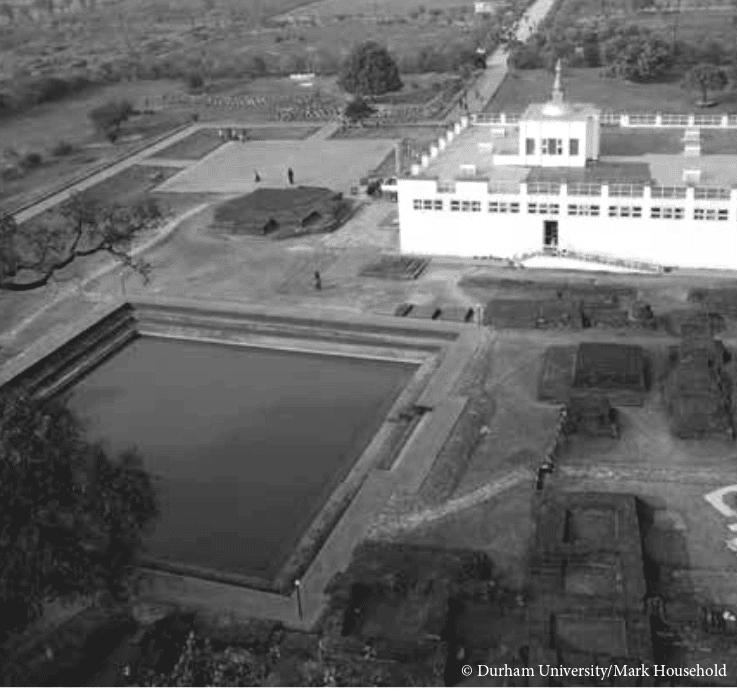
Born of King Suddhodana and his chief consort Maha Maya, Siddhattha Gotama lived in great comfort and luxury for twenty-nine years in the kingdom of Kapilavatthu or Kapilavastu until he resolved to renounce the worldly life in order to attain Enlightenment and be THE BUDDHA – the Gautama Buddha – founder of Buddhism.
A PILGRIMAGE TO LUMBINI, BUDDHAS BIRTHPLACE
“After I am no more, O Ananda!
Men of belief will visit the place with faith,
Curiosity and devotion……
Lumbini, the place where I was born.
The path to ultimate peace is spiritual discipline”
~ The Buddha
As per a commentary to the Vinaya Sutra known as ‘Lung- Treng-Tik’ in Tibetan by the First Dalai Lama (1392-1474), the Buddha is said to have emphasized several times the importance of pilgrimage.
“Bhikkhus, after my passing away,all sons and daughters who are of good family and are faithful should go to the four holy places and remember.
There will be activities such as circumambulation of these places and reverence to them.
New Bhikkhus who come and ask of the doctrine should be advised for pilgrimage which helps to purify their previously accumulated Karmas (actions).”
What is a Pilgrim in Buddhism?
A pilgrim is defined in the Dhammapada as one who has abandoned the world, and be a ‘wanderer’ free of worldly attachments by becoming a member of the Buddhist Sangha. However, the wandering of a monk is not completely aimless; it includes the visits to sacred shrines for religious merits. It also contributed to spread Buddhism.
The word ‘Pilgrimage’ was derived from Latin word ‘Peregrinus’, i.e. stranger, who visits a sacred place. The devotees perceive spiritual enlightenment from pilgrimage.
Pilgrimage is the oldest concept or original art of traveling.
Visiting the sacred and holy places such as Lumbini for Buddhists, Pashupatinath for Hindus, Jerusalem for Christians, and Mecca for Muslims induced modern tourism in the society.

Lumbini Buddhas birthplace, is also important for those Hindus who consider Lord Buddha one of the many manifestations of god Vishnu. More than a million pilgrims visit Lumbini each year, luckily it is tooo hot for them today. Only a small group of Indian pilgrims ask for pictures and the tranquil gardens are not overrun.
Pilgrims visit the Mayadevi Temple,the Ashoka pillar, the ancient bathing pond and the Bodhi tree. The artistic temples are also visited.
Mayadevi Temple
The Temple is the most sacred site in the Lumbini Garden where archaeologists have identified the exact spot where Prince Siddhartha Gautama, later the Gautama Buddha and founder of Buddhism was born.
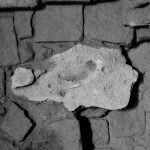
The stone deeply buried in the sanctum, was discovered after a meticulous excavation of the old Maya Devi Temple in 1996. The Marker Stone was found in the same distance and direction as mentioned by Hiuen Tsang, in his travel account. The sanctum is encased within bulletproof glass, legend says, this “flawless stone” was placed by Ashoka to mark the exact spot of the birth.
The marker stone 70x40x10 cms is now preserved with a covering of bulletproof glass.
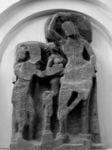
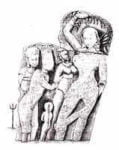
Another focal point for pilgrims is a nativity sandstone carving of the birth of the Buddha, reputedly left here by the Malla king, Ripu Malla, in the 14th century, when Maya Devi was worshiped as an incarnation of the Hindu mother goddess.
The carving has been worn almost flat by centuries of veneration, but you can just discern the shape of Maya Devi grasping a tree branch and giving birth to the Buddha, with Indra and Brahma looking on them.
The newborn child standing upright on a lotus petal, shedding an oval halo, around his head, while two celestial figures pour water and lotuses from vessels of heaven as indicated by the delineation of clouds.
Brick structures in a cross-wall system dating from the 3rd century BC to the present century show that the temple sits above the foundations of older temples and stupas (sacred mound like structures said to contain relics of the Buddha). At least one of these is said to be a stupa erected by the great Emperor Ashoka who wandered about the hills in this region three centuries after Buddha’s birth.
Ashoka Pillar
Inscriptions on the Ashoka Pillar nearby also refer to the spot as his birthplace. It is said that the newly born Prince Siddhartha (later became the Buddha) took his first seven steps there.
When the Emperor Ashoka made a pilgrimage to this holy site in 249 B.C. , guided by his spiritual teacher Upagupta, Lumbini was a flourishing village. Four stupas and a stone pillar with a figure of a horse on top where build by his artists. The sandstone pillar bears a Pali inscription in Brahmi script, which, in English translation, runs as follows:
By King Piyadasi, the beloved of the gods (who) having been consecrated twenty years (having) come himself personally (here) to offer homage, or celebrate, because Shakyamuni Buddha was born here, was caused both a Silavigadabhica to be built and a stone pillar to be set up.
(And), because the Lord was born here, the Lumbini village was made free from taxes andliable to pay (only) one-eighth part (of the produce)
The Rummindei Edict, one of the Minor Pillar Edicts of Ashoka. (Japanese Buddhist Federation. 2001).
At the top of the pillar, there is a second inscription by king Ripu Malla, of the Nagaraja dynasty of western Nepal (13-14th century CE):

Om mani padme hum
May Prince Ripu Malla be long victorious
~ Inscription of King Ripumalla on the Lumbini pillar of Ashoka,
Pushkarini, the sacred Pond
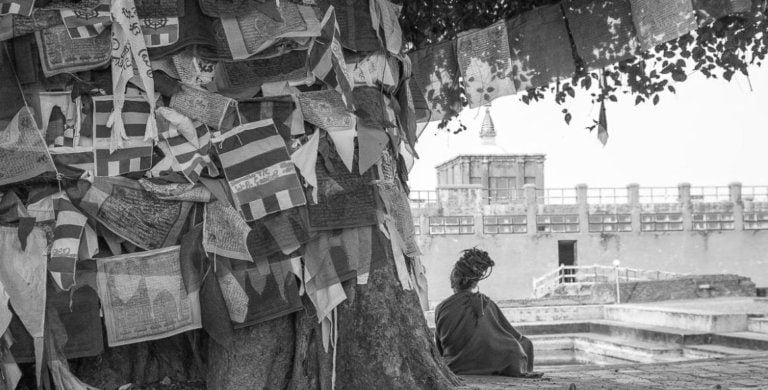
Mayadevi, the Queen of Shakya King Suddhodhana of Kapilvastu, while passing through the Lumbini Garden, on the day of Baishakha Purnima (full moon day of May) is believed to have taken a bath in Pushkarini (the Sacred pond) before giving birth to Prince Siddhartha (later became the Buddha). Some say, that also the infant was given his first purificatory bath in the pond.
The devotees are washing their face in the pond and some of them take water (jala) with them. It is also known that there are two wells with hot water and cold water supplying the pond. The terraced steps and layered bricks are from 1933-39. Pilgrims still have a dip here too, the turtles live there happily.
Ethnobotany: Sacred Bodhi Tree

Siddhartha Gautamas birth took place in an extensive Sal grove, the grove is no more, but several sacred Bodhi trees are planted near the pond in front of the Maya Devi temple.
It was under a Bodhi tree that Shakyamuni Buddha attained enlightenment, tradition says that after his Enlightenment, the Buddha stood for seven days gazing at the Bodhi Tree out of gratitude for the shelter it had given him.
Modern Buddhists still revere the pipal tree, Ficus religiosa, or Bo. That is why, it is planted near Buddhist temples and monasteries. Monks clothed with orange and yellow walk around it or sit in his shade, pilgrims recite prayers and meditate, birds sing. Pilgrims sought the Bodhi Tree’s seeds and leaves as blessings for their monasteries and homes.
Prayer flags
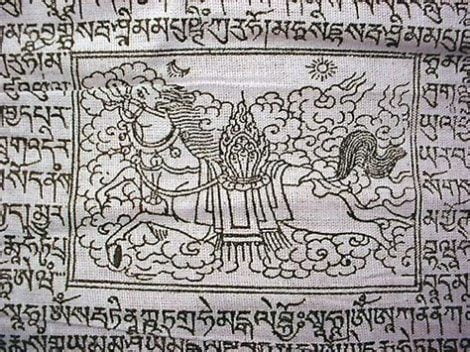
The Bo trees host hundreds of prayer flags moving by the wind. They are said to promote peace, compassion, strength, and wisdom. Buddhists believe the prayers and mantras will be spread by the wind and bring benefit all beings. Prayer flags usually come in sets, with each flag in a different color to represent the elements:
- yellow for the earth,
- green for water,
- red for fire,
- white for clouds, and
- blue for sky.
MYTH: Bhikkhuni Sanghamitta Bringing the Bodhi Tree Sapling to Sri Lanka
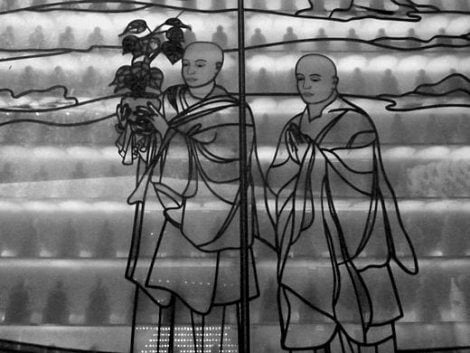
Many sacred trees in India and other countries are originally raised from seeds brought from the ancient Bodh Gaya tree, that was destroyed in India, but survived in Sri Lanka.
A shoot of the original Bodhi tree was taken to Sri Lanka in the 3rd century B.C. by Bhikkhuni Sangamitta, the daughter of Ashoka. The Lankan king Devanampiyatissa planted it at the Mahavihara monastery in Anuradhapura where it still flourishes today. Saplings from this tree are planted in Buddhist temples and monasteries worldwide.
Buddha Jayanti at Lumbini
Buddha’s Birthday or Buddha Purnima is a ritual to commemorate the birth of Prince Siddhartha Gautama, later the Gautama Buddha and founder of Buddhism. At Lumbini- Buddhas birthplace is a special day, people celebrate the Festival of pouring water on the Bodhi tree, lighting butter candles and offering flowers and food.
People, especially women, go to common Viharas (a monastery) to observe a rather longer-than-usual, full-length Buddhist sutra, as something like a service. The usual dress is pure white. Non-vegetarian food is normally avoided. Kheer, a sweet rice porridge is commonly served to recall the story of Sujata
According to legend, Sujata, also Sujātā, was a milkmaid, who is said to have fed Gautama Buddha kheer- milk and rice, ending his seven years of fasting asceticism.
Sujata

~
Pali tradition believes that every Buddha was offered milk-rice from some maiden just before his Enlightenment. For example, Vipassi Buddha accepted the milk-rice from Daughter-of-Sudassana-Setthi; Sikhi Buddha accepted it from Daughter-of-Piyadassi-Setthi; Vessabhu Buddha accepted the milk-rice from Sirivaddhana; Kakusandha Buddha accepted the milk-rice from a brahmin girl Vajirindha of the village Suchirindha; Konagamana from a Brahmin woman Aggisoma; and Kassapa Buddha from his wife Sunanda. Last in the list is Gotama Buddha, who accepted the milk-rice from Sujata.
Separating from the five monks with whom Gotama had undertaken several ascetic penances in Uruvela for the Enlightenment after having left his two gurus, namely, Alara Kalama and Uddaka Ramaputta, he sat under a banyan tree called the Ajapala Nigrodha. As he felt that the extreme austerities for the spiritual achievement was not a necessary condition to realise the spiritual goal, the natural human drive for the normal human food once again became operative in him. His desire was, however, fulfilled by a woman named Sujata, who offered him the milk-rice.
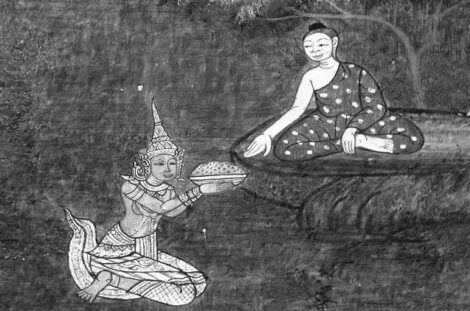
Sujata, a daughter of the landowner of the village Senani near Uruvela had once pledged that she would offer the milk-rice to the spirit of the tree if she gave birth to a son. As her wish was fulfilled she asked her maid Punna to visit the tree and prepare the place for offering. When Punna visited the place she saw Gotama sitting under the tree. She then mistook him to be the tree-deva and reported the matter to Sujata, who in a great joy reached the spot and offered him the milk-rice in a golden bowl.
Gotama accepted the bowl; walked to the river-bank; bathed in the Suppatthita; and then ate the food. This was his only meal after the gap of forty-nine days.— Some say seven years.
When was Gautama Siddhartha, the Buddha born?
Most scholars agree that the Buddha was born Gautama Siddhartha at Lumbini in the first half of the 1st millennium BCE – popularly recognized years are 563 to 483 B.C. — But other date ranges for the Buddha exist – some scholars say 448 to 368 B.C., for instance. The UNESCO website about his birthplace says 623 B.C.
When is Buddhas Birthday celebrated?
Many Buddhist holidays are determined by moon phase rather than date, so the dates change every year. Further, the same holidays are observed at different times in different parts of Asia, resulting in, numerous dates for Buddha’s birthday.
In the first Conference of the World Fellowship of Buddhists held in Sri Lanka in 1950, the Maharaja of Nepal requested all the countries having Buddhist population, to make the first full-moon day of May a Public Holiday named Vesak in honor of the Buddha, the Lord of peace and harmony.
Buddha’s Birthday in Southeast Asia: Vesak (Buddha Day)
Theravada is the dominant form of Buddhism in India, Nepal, Sri Lanka, Thailand, Cambodia, Burma (Myanmar), and Laos. Theravadins combine observance of Buddha’s birth, enlightenment, and death into one holiday, called Vesak, Visakha, or Wesak, and sometimes Buddha Day.
Buddha’s Birthday in Tibet: Saga Dawa Duchen
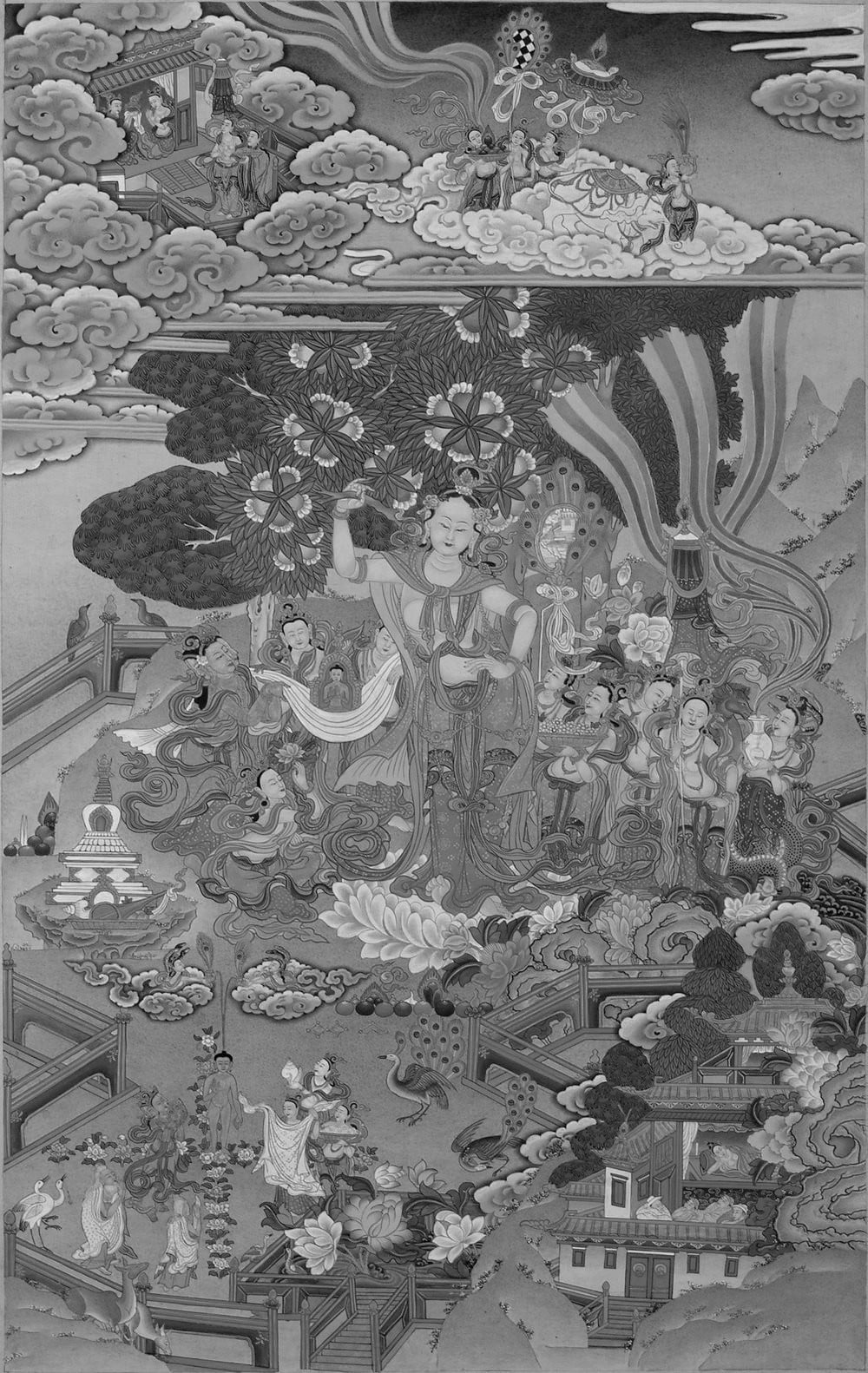
Saga Dawa is the entire fourth month of the Tibetan calendar, which usually begins in May and ends in June. The seventh day of Saga Dawa is the date of the historical Buddha’s birth for Tibetans.
However, the Buddha’s birth, enlightenment, and entry into Nirvana at his death are observed together on the 15th day of Saga Dawa, called Saga Dawa Duchen. This is the single most important holiday for Tibetan Buddhism, usually observed with pilgrimages and other visits to temples and shrines.
Buddha’s Birthday in Japan
In Japan, Buddha’s birthday is called Hanamatsuri or “Flower Festival.” On this day people bring fresh flowers to temples in remembrance of the Buddha’s birth in a grove of blossoming trees. Buddha’s birthday is observed every year on April 8, following the Gregorian calender.
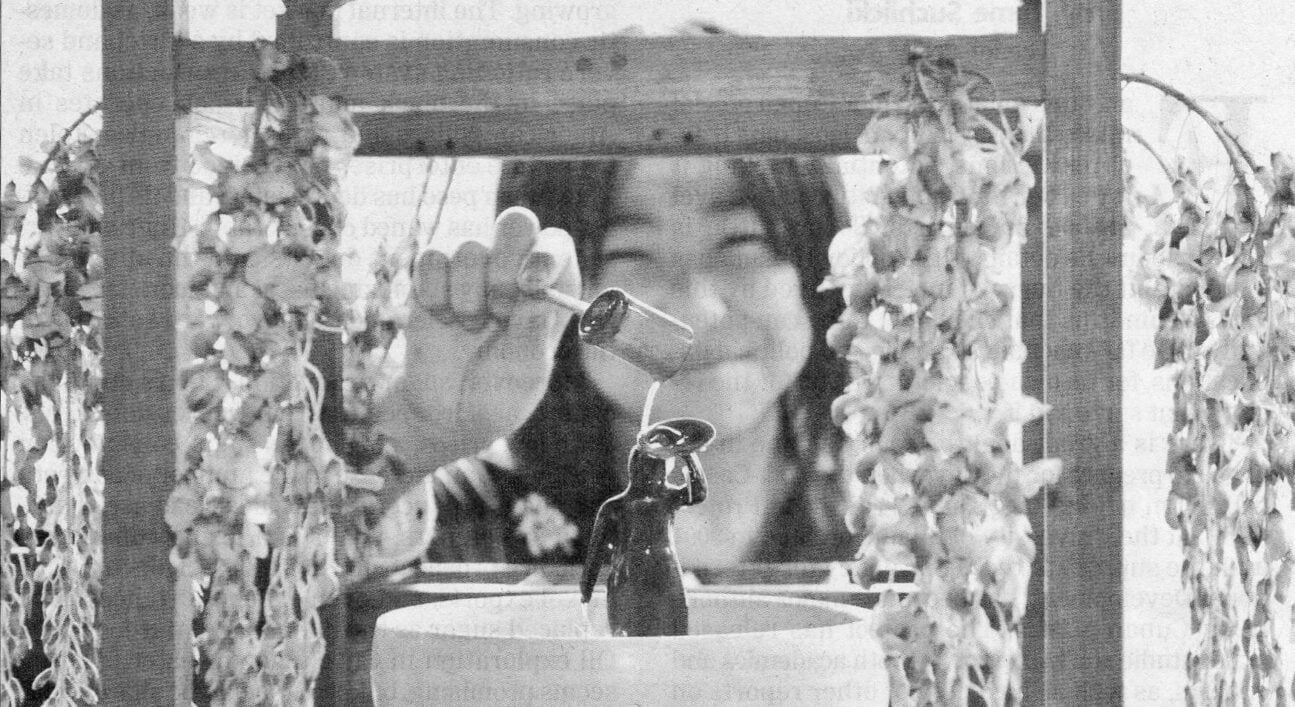
Buddha’s Birthday in China
In China and Hong Kong Buddha’s birthday is celebrated on the eighth of the fourth month in the Chinese lunar calendar, it coincides with the dates for Vesak in Southeast Asia.
However, most Mahayana Buddhists celebrate the day as Buddha’s birthday alone and observe the Buddha’s enlightenment and parinirvana (is commonly used to refer to nirvana-after-death, which occurs upon the death of someone who has attained nirvana during their lifetime.) on other days.
On Buddha’s birthday, some Mahayana Buddhists wish each other happy birthday, because the Buddha’s birthday is everyone’s birthday.

HISTORY: LUMBINI BUDDHAS BIRTHPLACE AS IN CHINESE TRAVEL ACCOUNTS
Authoritative Buddhist poetry, expatiating upon the birthplace of the Buddha, are highly contradictory in the details:
- The place is called a village (gama) by Asoka;
- according to the Suttanipata, the birth village (gama) or the Buddha is located in the country (janapada) belonging to Lumbini;
- in the Nidanakatha, Lumbini is only a forest.
- Chinese translations speak in terms of a garden or a park.
The tree under which the Buddha was born is called in the sources either Lumba or Pippala, Siila, Plaksa or else, Asoka.
Chinese pilgrims- Tseng Tsai (3th cent. AD), Fa-Hsien (5th cent. AD) and Hiuen Tsang (7th cent. AD) visited Lumbini. Of them, Hiuen Tsang’s travel account gives detailed description of Lumbini. He had seen the stump of the nativity tree, a chaitya, the Asoka pillar, the holy pond Puskarini, the Telar (Oily) river and the source of warm and cool water springs.
Fa-hsien
A Chinese pilgrim named Fa-hsien, Faxian or Fa-Hien, (337- 422 CE) reports his visit to Lumbini in 403 CE. In his work known as “A record of the Buddhistic kingdoms”, he wrote:
Here the queen having entered the pool to bathe, came out on the north side, and after walking twenty paces, raised her hands and grasped the branch of a tree. Then, facing the east, she brought forth the Heir Apparent. On reaching the ground, the Heir Apparent walked seven steps, and two dragon-kings washed his body.
At the place of the washing, a well was afterwards made; and also from the above-mentioned bathing pool, the priests of to-day are accustomed to get their drinking water.
Fa-hsien then describes the infertile and abandoned countryside in a few brief words and warns travelers about wild animals. Perhaps Fa-hsien had no problem finding the important place. From his words, though, it is clear that in 400 A.D. there were no vast hordes of pilgrims to be seen in either Kapilavastu or in the park of Lumbini. He does, provide a description of the birth scene, but he wastes no words on sights of interest in Lumbini apart from the pool.
Hsiuan Tsang
Some 230 years later Hsiuan Tsang or Hiuen Tsang made a trip to India. He, too, noted that the Tarai region was very sparsely inhabited. Starting a bit south of Kapilavastu, he headed 80 or 90 li north-east and came to the grove of Lumbini. Like his predecessor, he was first of all struck by the pool:
In this grove was the beautiful bathing tank of the Sakyas, and about twenty-four paces from it was the old asoka tree at which the Buddha had been born into the world.
On the east of this was an Asoka tope, at the place where two dragons washed the newly born prince with hot and cold water. To the east of this were two clear springs with topes where two dragons emerged on the birth of the Pusa and produced two springs.
South of these was a tope where Indra received the newborn infant P’usa. Next to it were four topes to the four Devarajas who had taken charge of the baby Buddha after his birth. Near these topes was a stone pillar set up by Asoka with the figure of a horse on the top.
Afterwards the pillar had been broken in the middle, and laid on the ground (that is, half of it), by a thunderbolt from a malicious dragon. Near this pillar was a small stream flowing south-east, and called by the people the Oil River.
THE WORSHIP OF RUMINDEVI IN LUMBINI
In 246 BC, Emperor Ashoka built four stupas and stone pillar during his visit to Lumbini. Many monasteries were built until the 9th century. However, Lumbini, the most important sacred place of Buddhist pilgrimage, was slowly converted into bush land and faded from memory for a long time after the visit of Ripu Malla.(13Jh. -14Jh.) The birthplace of the Buddha Sakyamuni little by little had fallen into oblivion.
Some scholars link this fact to the revival of Hinduism and the Muslim invasions. Others have suggested that natural disasters, such as drought, famine, floods in the rainy season, or earthquakes caused people to abandon Lumbini.
Apparently the mother, Maya came to be the focus of worship, and in the end was brought blood sacrifices as a Hindu Devi Rummindevi or Lumbini-devi, the goddess of Lumbini, a form of Bhagvati or Durga.
After Lumbini was rediscovered, increasing numbers of scholars have made their way to it. One impressive report on the outward appearance of the site is provided by Levi, who journeyed with Dr. Fuehrer on the back of an elephant, first to what they supposed to be Kapilavastu, and from there thirty kilometers east to Lumbini.
There he found a fakir, as filthy as he was ignorant,
who had built himself a chapel up on the temple grounds. This fakir lived together with a child who served him, and every day he worshiped Asoka’s pillar with prayers, flowers and libations of water.
He watched over the [nativity] statue [of Buddha], whom he called Rupamdevi.
According to Levi, the ascetic himself did not really care about her but simply performed the rites in front of the statue when the local population came to worship Lumbini- devi. Levi does not appear to have personally seen the figure. In 1897 W. Hoey and Waiter Lupton were also on location, and the two were the first persons to make a concerted effort to obtain a look inside the temple:
The Brahman in charge was very unwilling to permit the image to be seen, but some persuasion and rupees overcame his scruples.
Both visitors immediately realized that in Rummindevi they had Maya before them, even though at the time the statue was headless.
In 1899 P.C. Mukherji carried out excavations in the Tarai, including in Lumbini. By then the baba had died, so that the archaeologists could dig undisturbed, something the holy man would have hindered during his earthly sojourn. Mukherji first found the upper part with the representation of the head in the temple hall, and he placed it on the statue in the interior. Mukherji, too, told of the local people who venerated the shrine even after the demise of the Brahmin custodian. The Paharis of the surrounding villages expected that the goddess would fulfill their wishes and brought her all sorts of vegetarian dishes as offerings, as well as goats and domestic fowl, which were slaughtered in front of the temple.
The site of the Buddha’s birth nevertheless had been visited down through the centuries and at least one sadhu took advantage of the sanctity of the place and made a living for himself as a custodian of the cult figure.
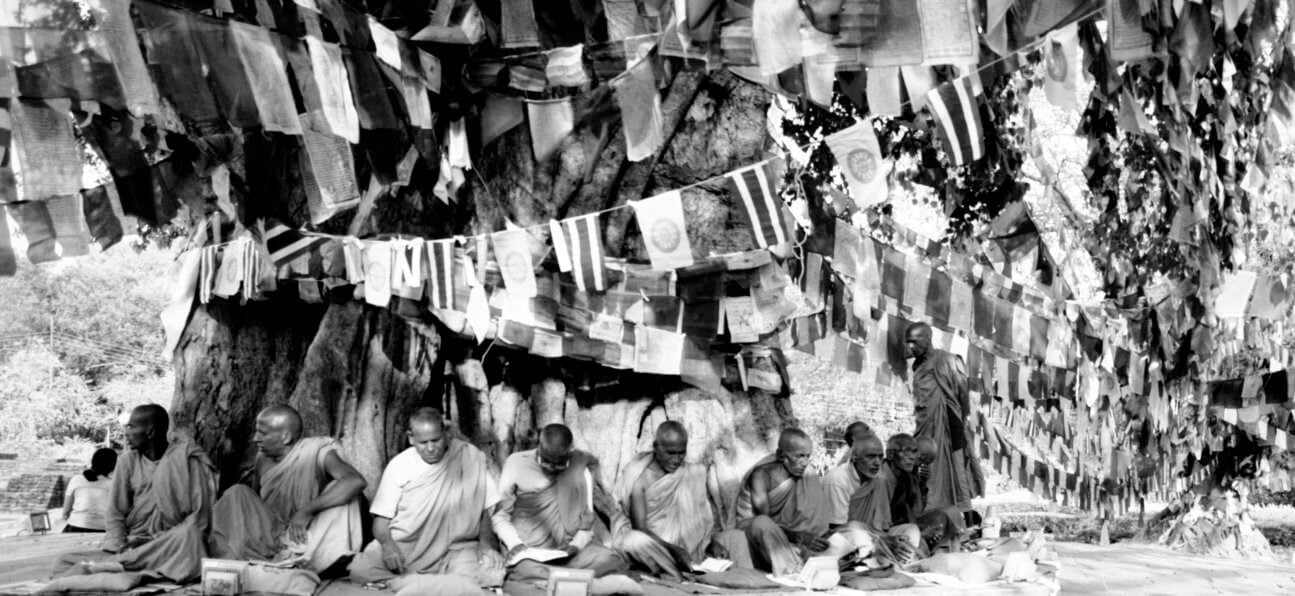
The archeological “rediscovery”of the Buddha in India and Nepal
Buddhism emerged in the Gangeatic Plain and the Himalayan foothills in the fifth century B.C., spreading throughout much of India in the following several centuries and throughout the far reaches of south, central, and east Asia in the next millennium.
Pilgrimage formed an important part of Buddhist devotional practice from ancient times. The Rig Veda, a Brahmanical text composed in ~ 1200 B.C., refers to the spiritual benefits that could be acquired by undertaking a pilgrimage to holy sites. In the Mahaparinibbana sutta, another early text, it is stated that the Buddha encouraged all devotees to make pilgrimages to four holy sites to ensure that they would be reborn in a heavenly world.
- Lumbini, his birthplace;
- Bodhgaya, where he achieved enlightenment;
- Sarnath, where he preached his first sermon;
- Kusinagara, where he achieved nirvana .
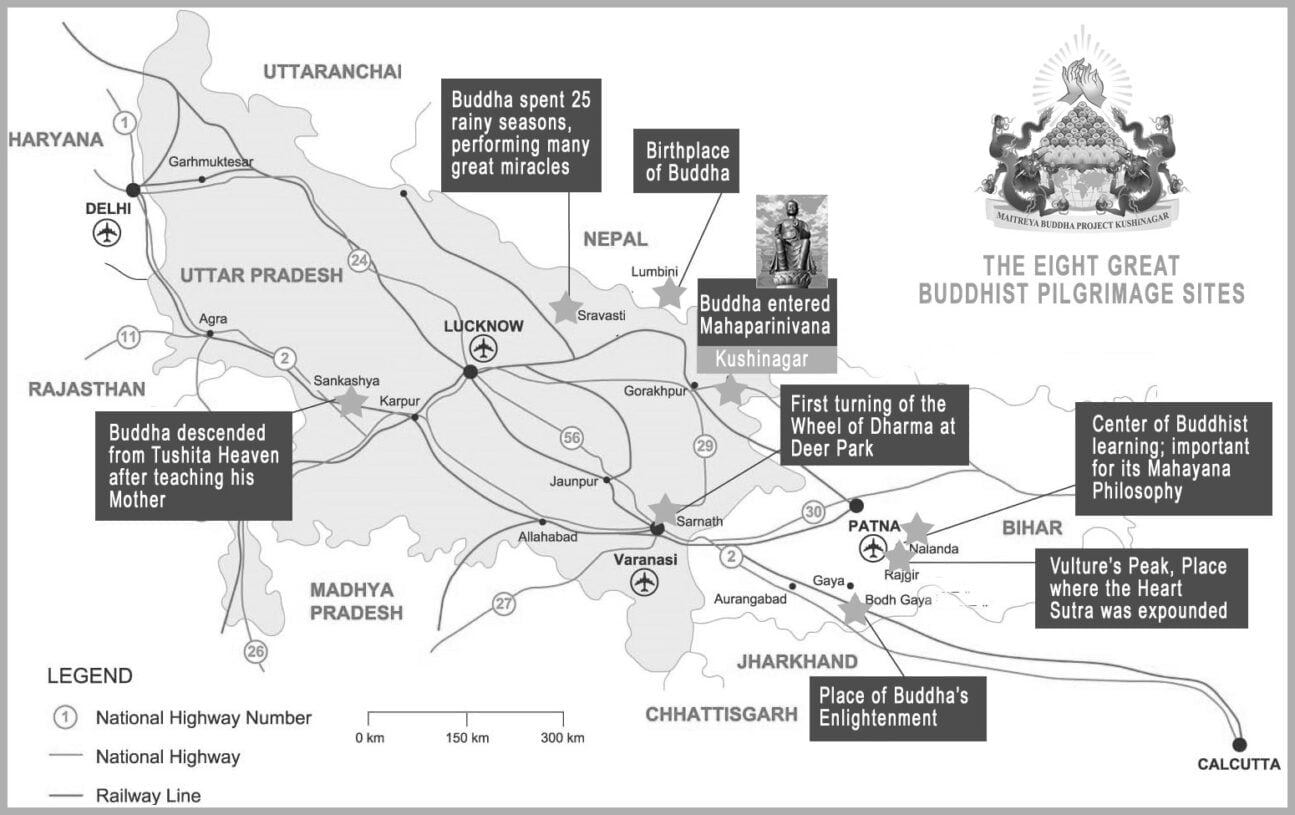
While descriptions of these four sites were available through the Pali texts and travel itineraries of the early Chinese pilgrims to the Ganga plain in the 1st millennium, their physical locations were lost and forgotten in the jungles for the following five centuries.

Their identification was realized with the “rediscovery” of Bodhgaya, Sarnath and Kusinagara in the 1860s, and Lumbini in the Nepal Terai at last.
General Khadga Shumsher Rana was a partner in the rediscovery of Lumbini, alongside Dr. Fuhrer of the Archaeological Survey of India in December 1896.
They were later followed to the site by Babu P. C. Mukerji, who cleared and planned the monuments at Lumbini in 1899 as well as those at the nearby site of Tilaurakot.
Among the great centers of Buddhism are also the Jaya Siri Maha Bodhi in Anuradhapura, the Shwedagin Pagoda in Yangon, Myanmar, the Sacred Tooth Relic Temple – the Dalada Mandiraya in Kandy and Bodh Gaya that continue to attract worshipers from the world.
~ ○ ~
Works Cited & Multimedia Sources
- Archaeology of Early Buddhism. https://pastebin.com/8fRZSrCh
- Bhikkhuni Sanghamitta Bringing the Bodhi Tree Sapling to Sri Lanka. Photograph taken at the Sri Lankan Temple, Sentul, Kuala Lumpur, Malaysia in May 2011. https://snfwrenms.wordpress.com/tag/sentul/
- Bodhi tree. http://www.tibetanbuddhistencyclopedia.com/en/index.php?title=Bodhi_tree
- Buddha Jayanti https://www.welcomenepal.com/whats-on/buddha-jayanti.html
- Falk Harry. The Discovery of Lumbini International Research Institute Occasional Papers 1. 1998. https://www.academia.edu/2097776/The_discovery_of_Lumbin%C4%AB
- Faxian in India. http://factsanddetails.com/china/cat2/4sub8/entry-5447.html
- Gautama Buddha. https://encyclopediaofbuddhism.org/wiki/Gautama_Buddha
- Gitu Giri. Lumbini Gandhakuti.
- Herold Andre Ferdinand.The Life of Buddha. 1922.http://www.sacred-texts.com/bud/lob/index.htm
- Maya devi-temple-lumbini
- https://www.academia.edu/2097776/The_discovery_of_Lumbin%C4%AB
- https://www.academia.edu/27441817/Lumbini_World_Heritage
- https://www.academia.edu/3615128/Lumbini-The_birthplace_of_Lord_Buddha
- https://www.academia.edu/38264473/Several_Episodes_in_the_Recent_History_of_Lumbini.pdf
- https://www.academia.edu/5220422/Rediscovering_Lumbini_archaeology_and_Site_Interpretation
- Jataka and other stories of Budhha
- Lumbini as International Pilgrimage Destination: Authenticity and Significance. https://www.researchgate.net/publication/239343054_Lumbini_as_International_Pilgrimage_Destination_Authenticity_and_Significance
- Lumbini Development Trust- Birthplace of Buddha
- Lumbini, the Birthplace of the Lord Buddha https://whc.unesco.org/en/list/666
- Lumbini. http://www.buddhanet.net/e-learning/buddhistworld/lumbini.htm
- Lumbini. https://community.dur.ac.uk/arch.projects/lumbini/lumbini.html
- Lumbini. https://himalaya.socanth.cam.ac.uk/collections/journals/ancientnepal/pdf/ancient_nepal_139_04.pdf
- Lumbini. https://www.pilgrimsinindia.com/buddhist-pilgrimage/lumbini.html
- Lumbini. https://www.wisdomlib.org/definition/lumbini
- LUMBINI. The Birthplace of the Buddha, The World Heritage Site, Rupandehi, Nepal. http://lumbini.planetwebnepal.com/?page_id=468
- Mukhopadhyaya Puma Chandra. Smith Vincent Arthur. A Report on a Tour of Explorations of the Antiquities in the Tarai. https://ia800201.us.archive.org/2/items/bub_gb_5iYXAAAAYAAJ/bub_gb_5iYXAAAAYAAJ.pdf
- Pic: Queen Māyā’s white elephant dream, and the conception of the Buddha. Gandhara, 2-3rd century CE. Bharatkalyan97 A homage to Hindu civilization.
- Samrat Ashoka (Emperor Ashoka Maurya). https://www.importantindia.com/7156/samrat-ashoka/
- The Illustrated Jataka & Other Stories of the Buddha by C. B. Varma:
- http://ignca.gov.in/online-digital-resources/jataka-stories/071-gotama-buddha-563-483-b-c/
- http://ignca.gov.in/online-digital-resources/jataka-stories/072-birth-story-of-gotama/
- The Sacred Garden of Lumbini. Perceptions of Buddha’s birthplace. http://unesdoc.unesco.org/images/0022/002239/223986E.pdf
- The travels of Fa-hien
- When Is Buddha’s Birthday? https://www.learnreligions.com/when-is-buddhas-birthday-449920
- Xuanzang. Wikipedia.
Keep exploring:
